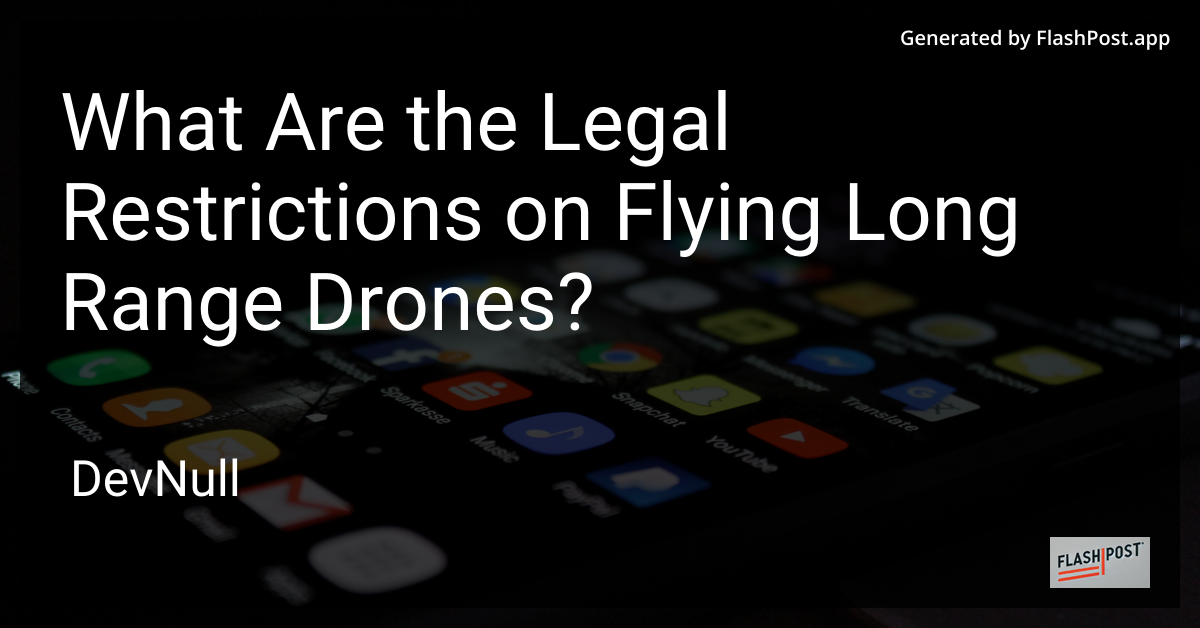

What Are the Legal Restrictions on Flying Long Range Drones?
Drones have become increasingly popular in recent years, offering enthusiasts, professionals, and hobbyists a unique perspective from the skies. However, when it comes to flying long-range drones, there are legal restrictions one must consider. Understanding these regulations is crucial to ensure safe and lawful drone operation. In this article, we explore the legal restrictions on flying long-range drones and provide insights into how to navigate this evolving landscape.
Federal Aviation Administration (FAA) Regulations
Registration and Identification
In the United States, the Federal Aviation Administration (FAA) requires drone operators to register their drones if they weigh more than 0.55 pounds (250 grams) and less than 55 pounds (25 kilograms). This registration process is crucial for drones used in both recreational and commercial activities. Once registered, a unique identification number must be visibly marked on the drone.
Operational Limits
For most hobbyists, the ceiling for flying drones is set at 400 feet above ground level to avoid interference with manned aircraft. However, long-range drones capable of flying significant distances must adhere to stricter regulations. These drones must always be operated within the pilot’s visual line of sight unless a waiver or exception is granted.
No-Fly Zones
Drone operators must be mindful of no-fly zones, which include areas around airports, military installations, and national parks. The FAA regularly updates its list of restricted airspaces, which can be accessed through its official website or trusted drone apps.
Beyond Visual Line of Sight (BVLOS) Operations
Waivers and Compliance
Operating drones beyond the visual line of sight (BVLOS) poses additional challenges and legal considerations. BVLOS operations are not permitted without specific FAA waivers and compliance with stringent requirements. This involves demonstrating that the operation will not compromise the safety of other airspace users or infringe upon privacy rights.
Safety Measures
Developing a comprehensive operational plan that outlines emergency protocols, failsafe mechanisms, and communication systems is essential for securing a BVLOS waiver. Additionally, drone operators must be well-versed in air traffic control communications and procedures.
State and Local Laws
Varying Regulations
In addition to federal regulations, drone operators must consider state and local laws governing drone usage. Some states have enacted specific legislation regarding drone privacy, noise, and nuisance. Thus, researching and understanding the jurisdictional nuances in your area is crucial before embarking on long-range flights.
Privacy Concerns
Privacy is a significant concern associated with drone flight. Many states have enacted laws aimed at preventing unauthorized surveillance and invasion of privacy. Familiarizing yourself with these laws is paramount, particularly if flying long-range drones equipped with high-resolution cameras.
Global Considerations
International Regulations
For those interested in flying long-range drones outside the United States, understanding international drone regulations is essential. Each country has its own set of rules concerning drone usage, and these can vary significantly. Always research the specific requirements of the nation you plan to fly in to avoid legal repercussions.
Conclusion
Navigating the legal landscape of long-range drone operation can be complex, but it’s essential to ensure the safety and legality of your aerial adventures. By understanding federal, state, and international regulations, drone operators can enjoy the full potential of their long-range drones while staying within the bounds of the law.
If you’re looking for discounted drones for photography, check out this great selection of top deals on drones with cameras.
Being informed and compliant with the legal restrictions on flying long-range drones not only protects you from potential liabilities but enhances the enjoyment and possibilities of your drone flights. Stay safe and happy flying!
